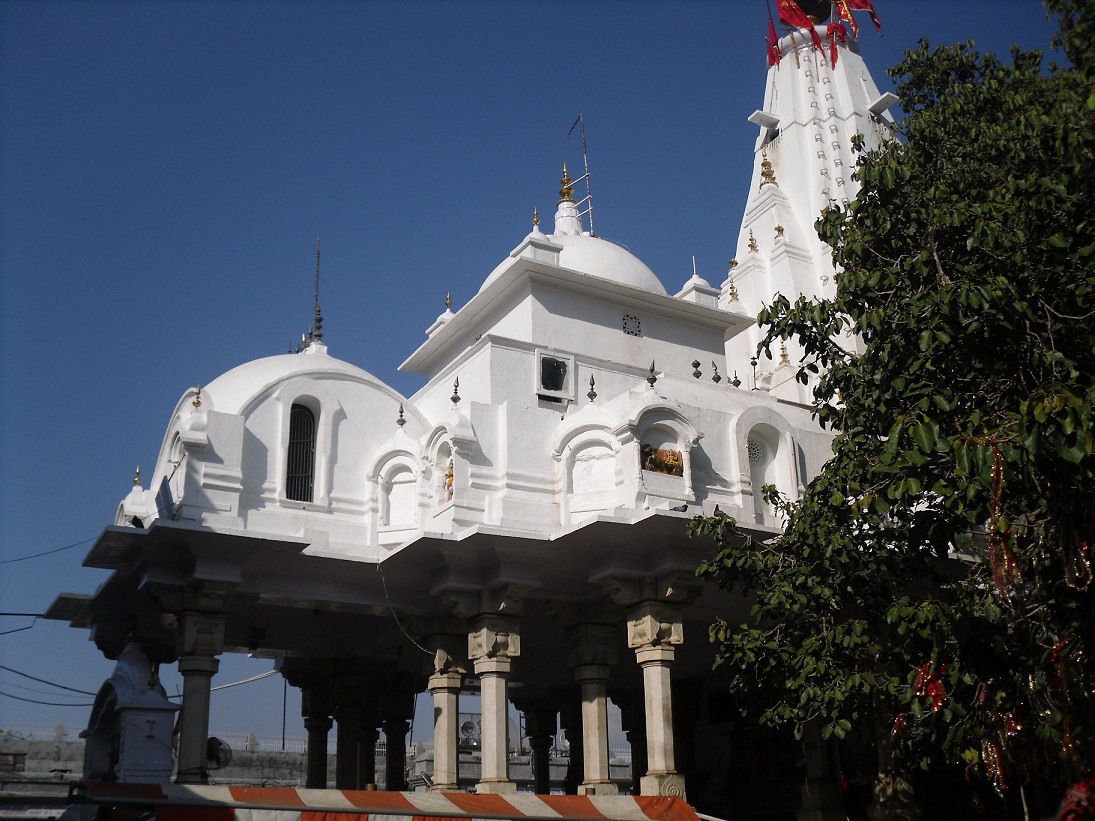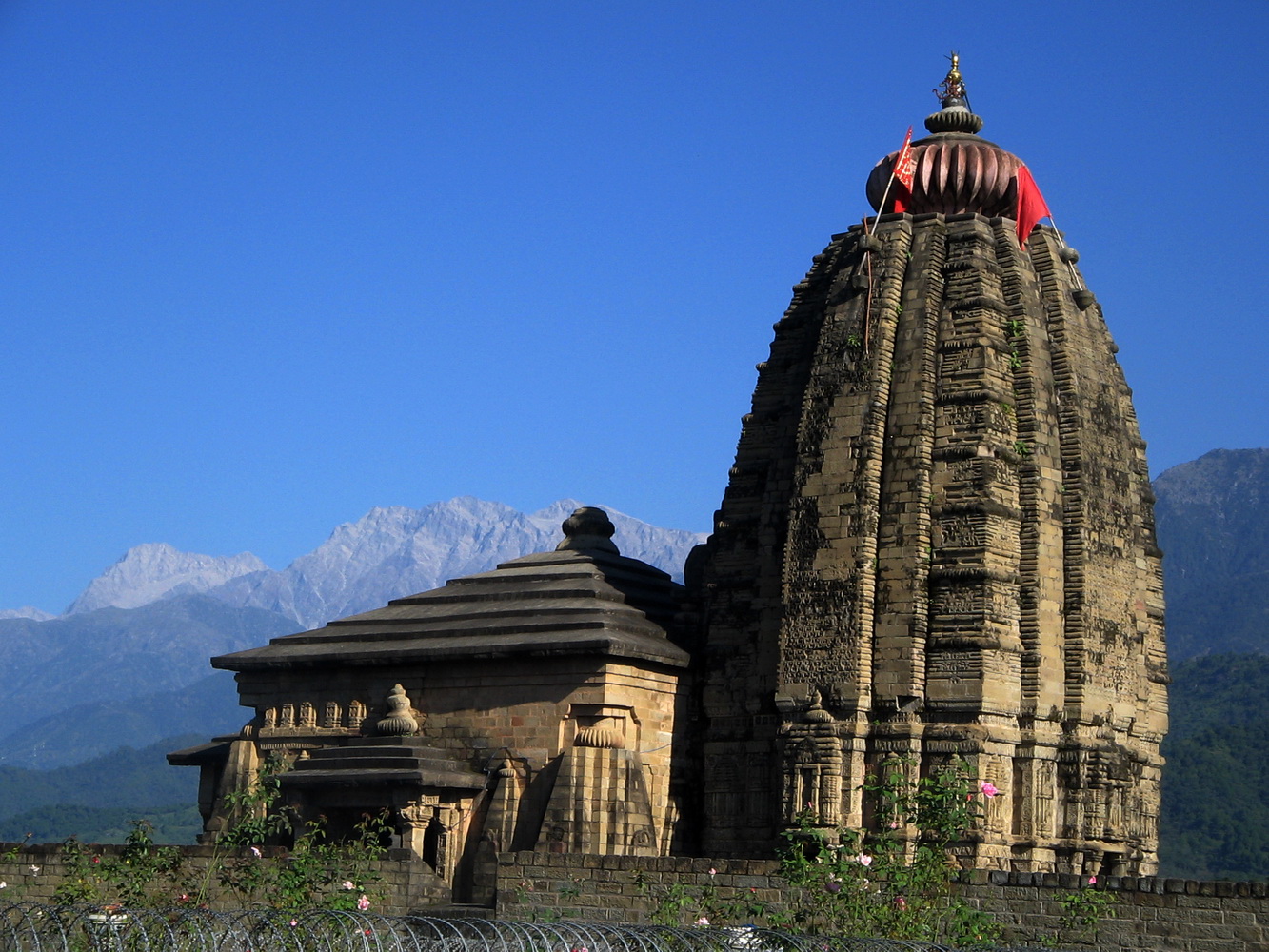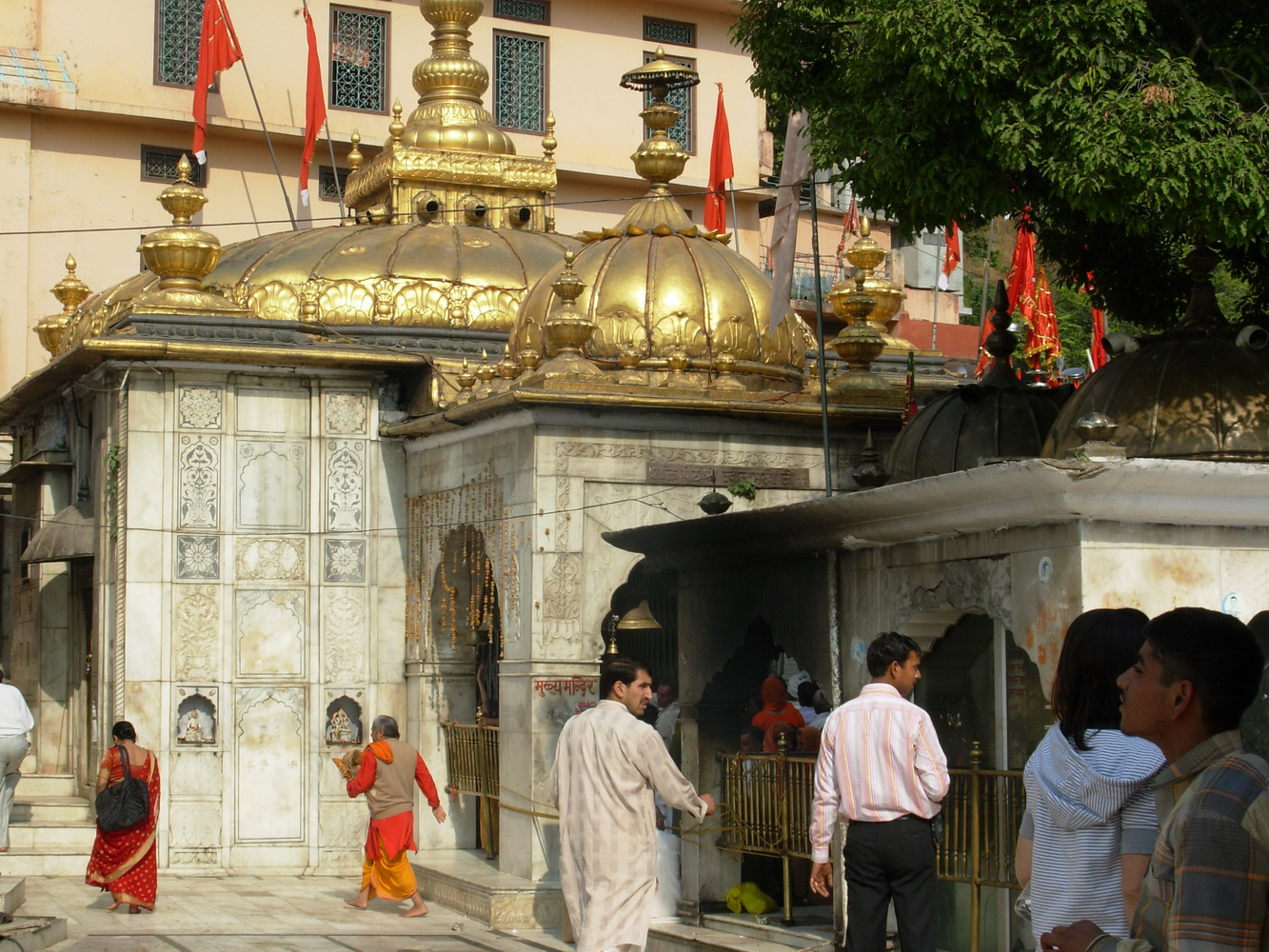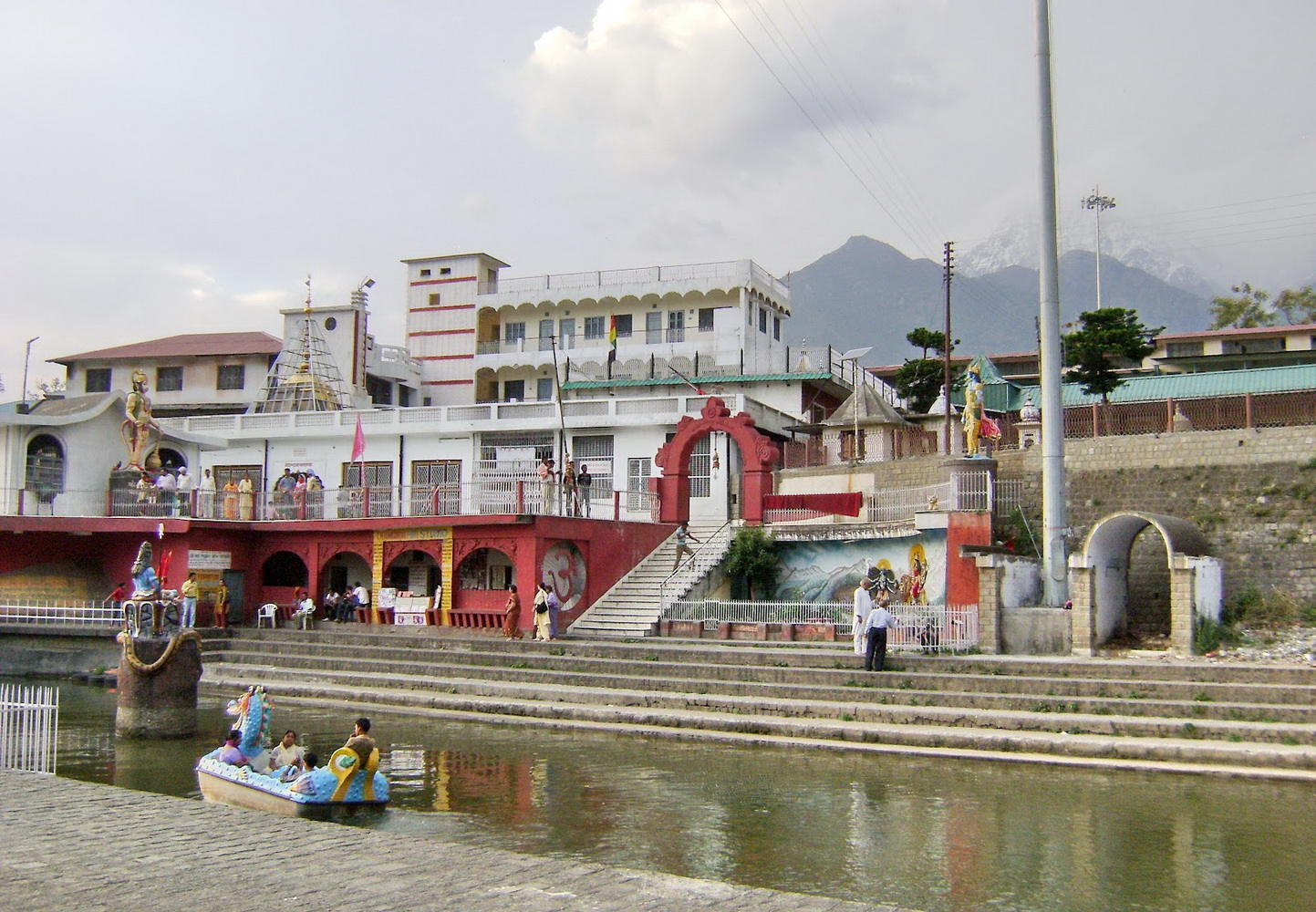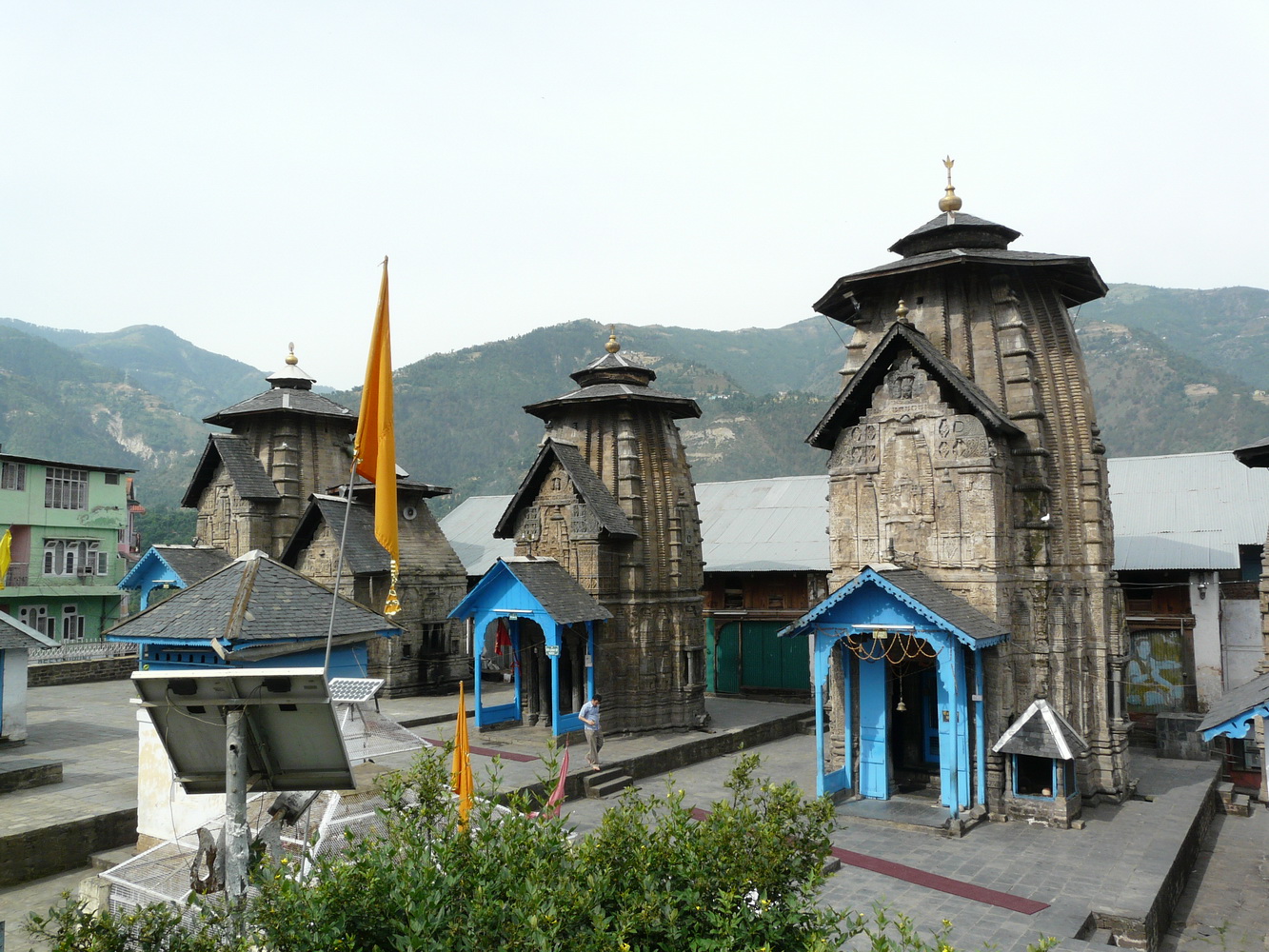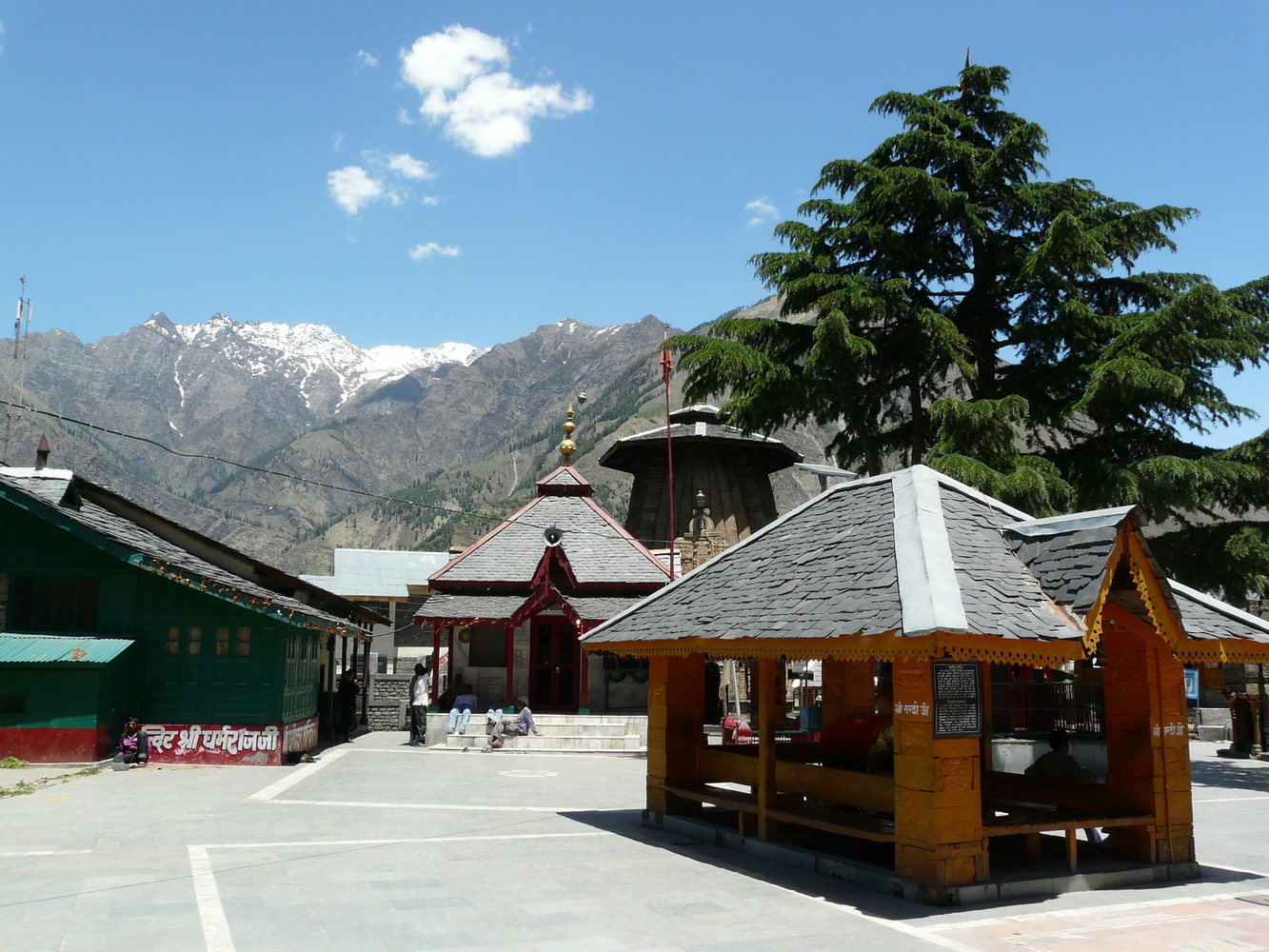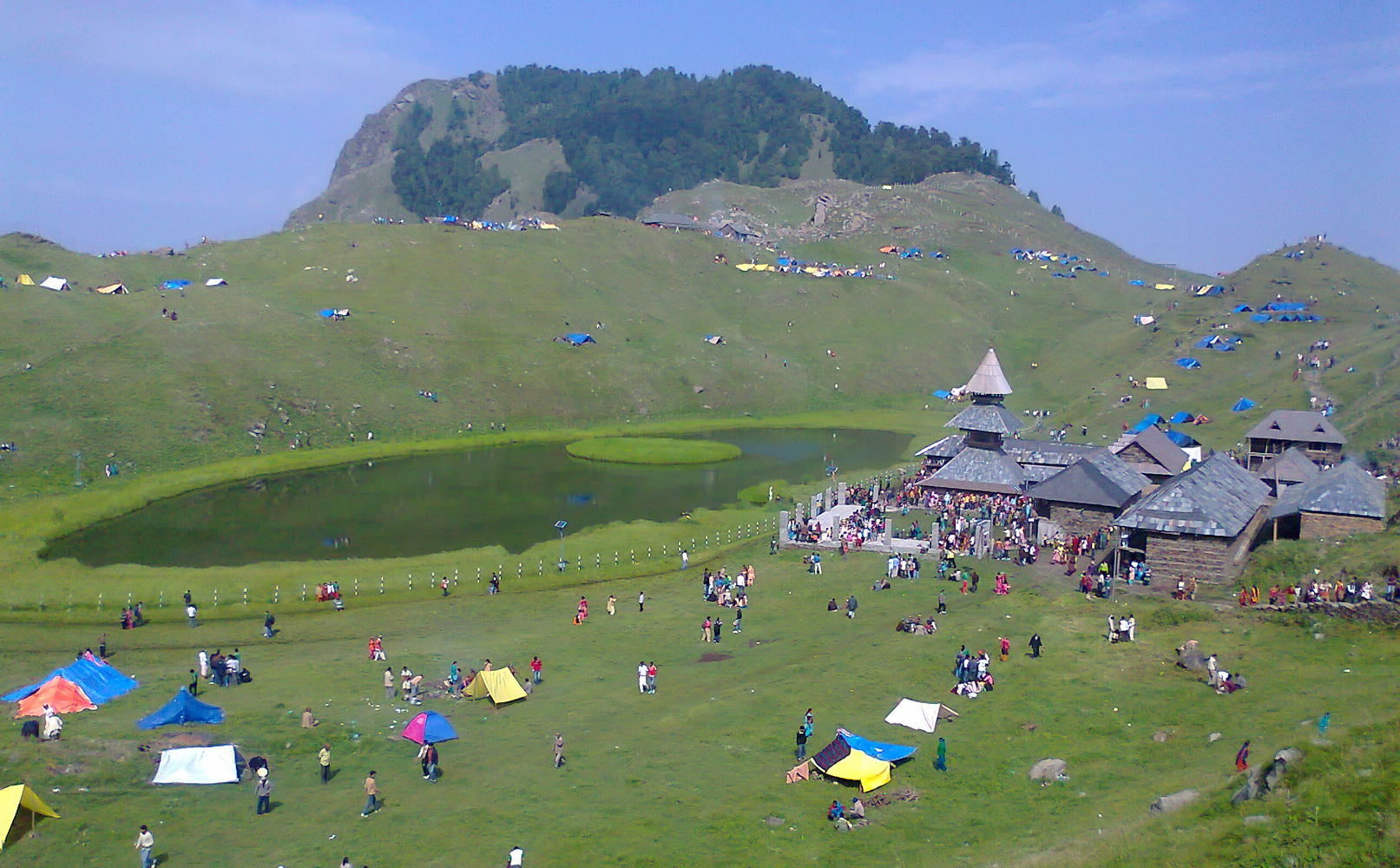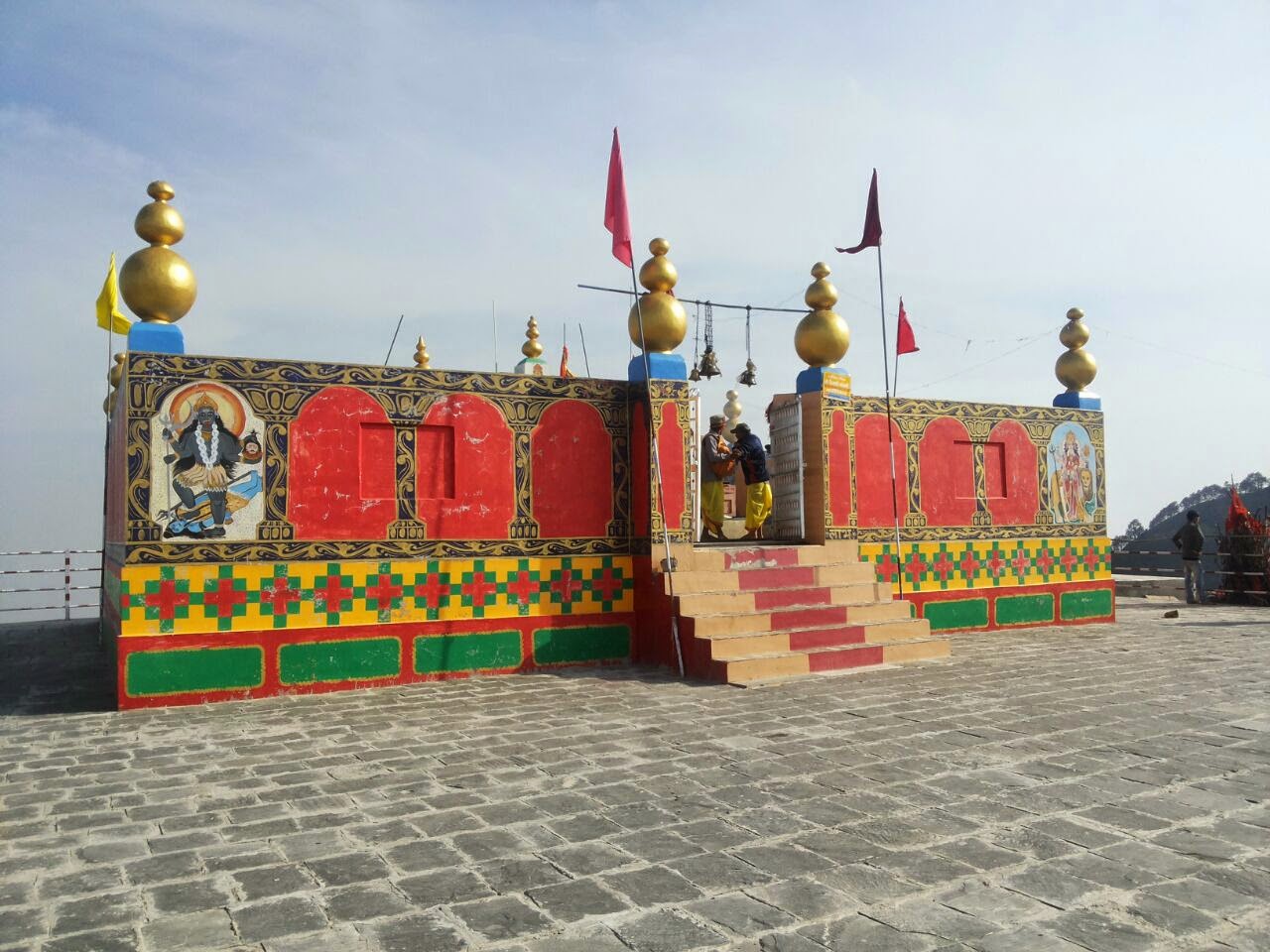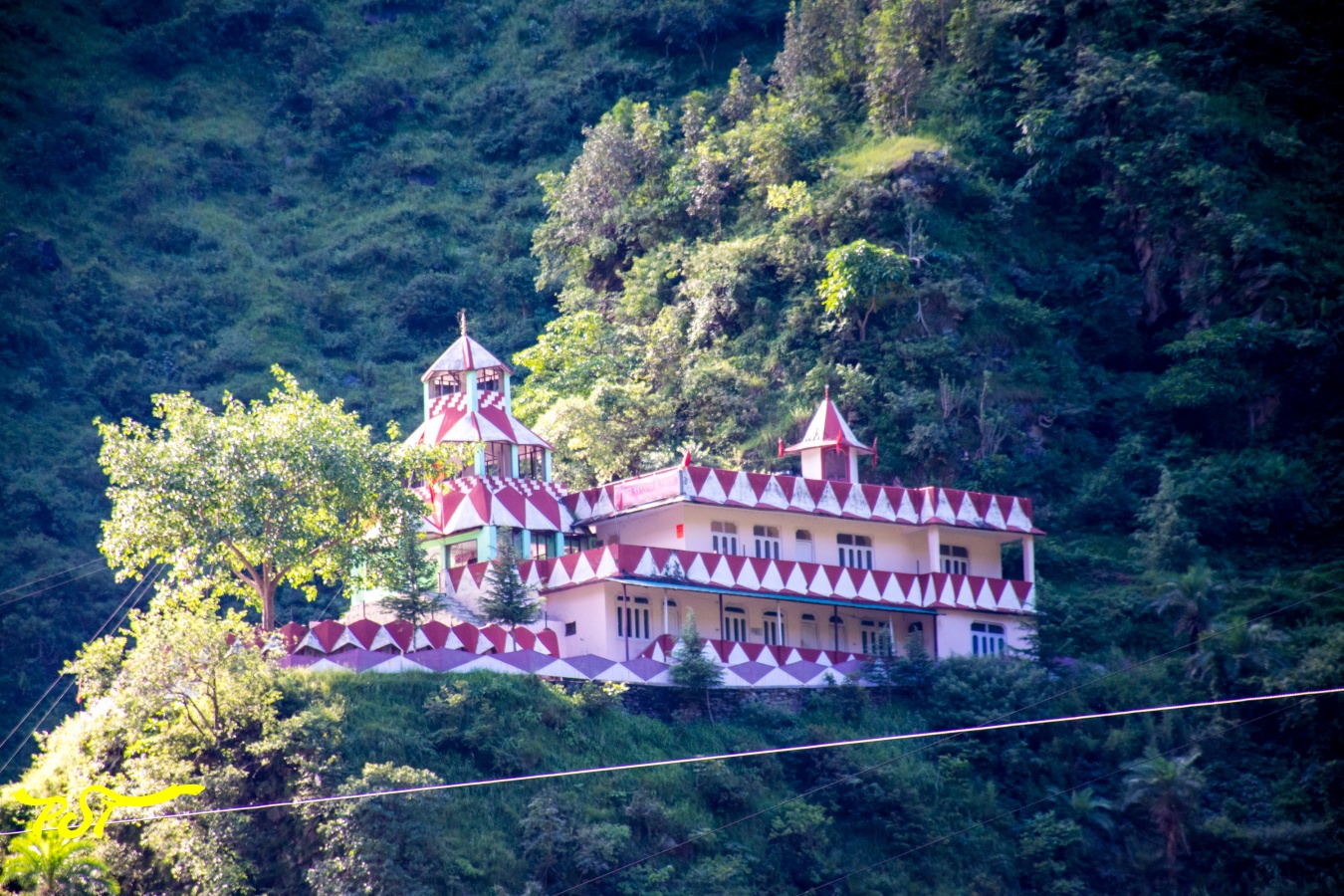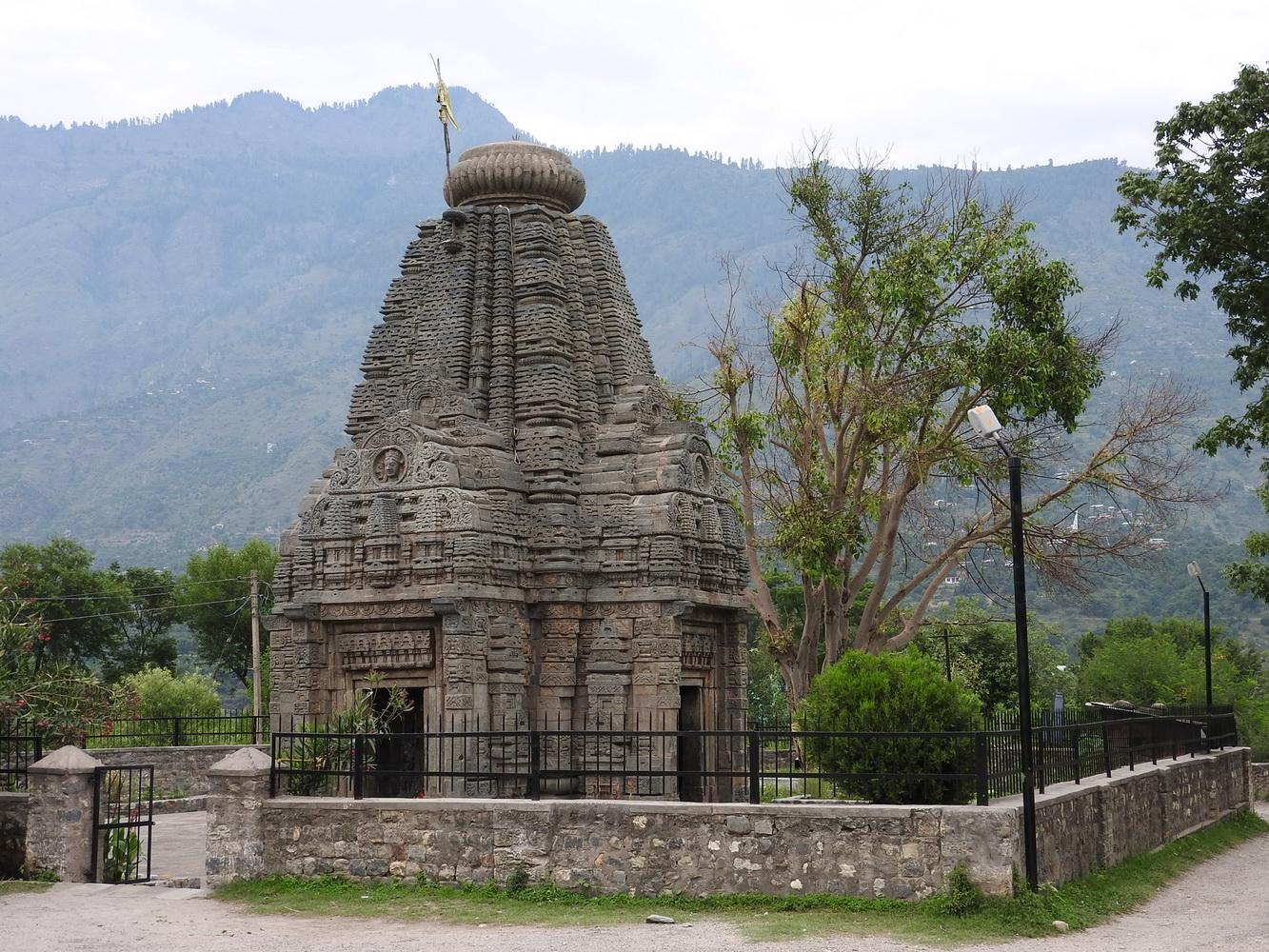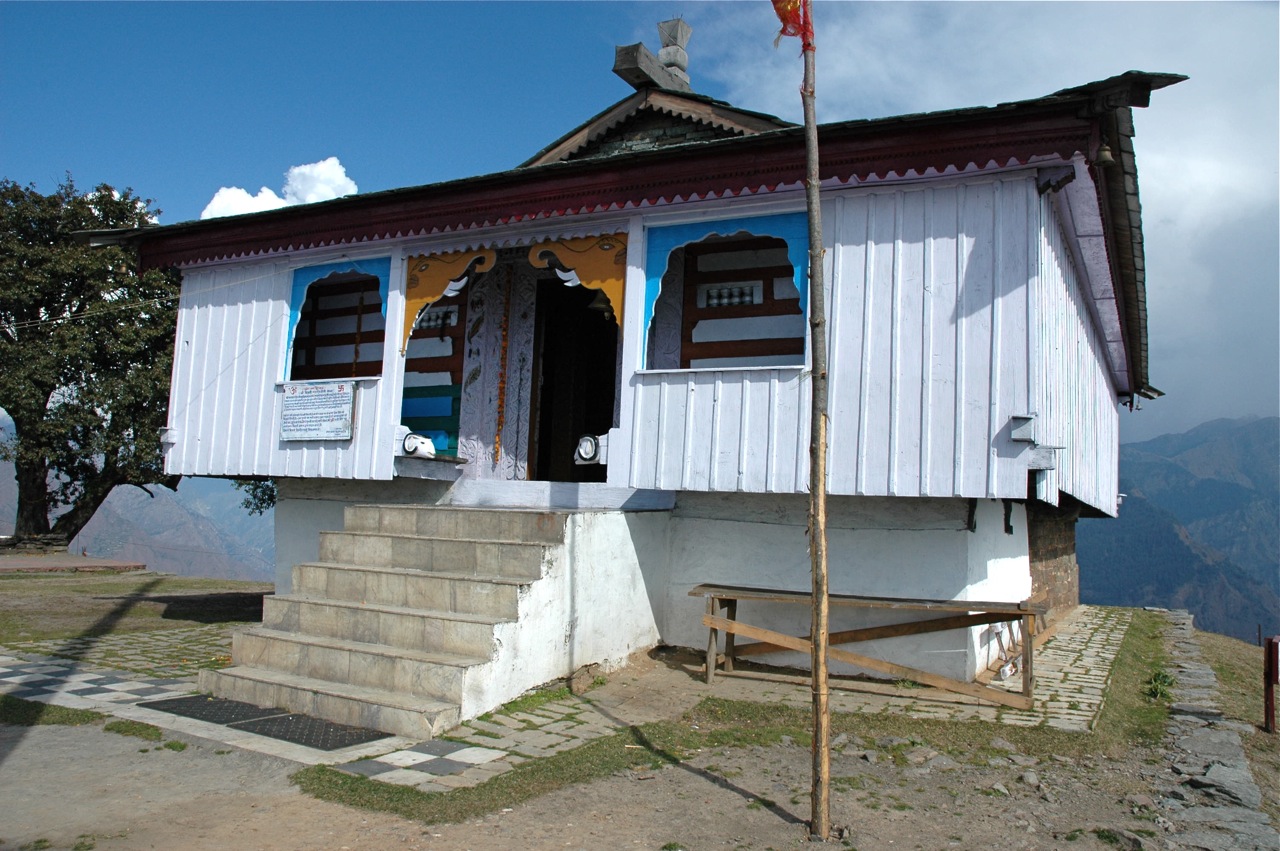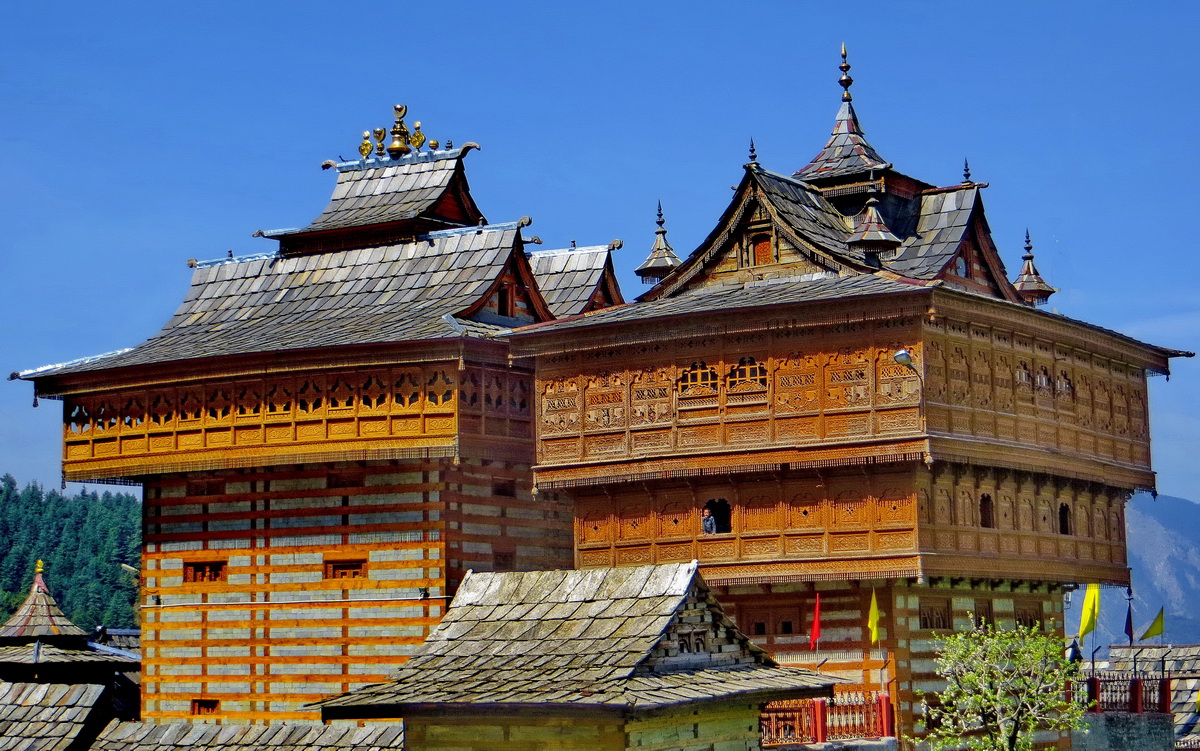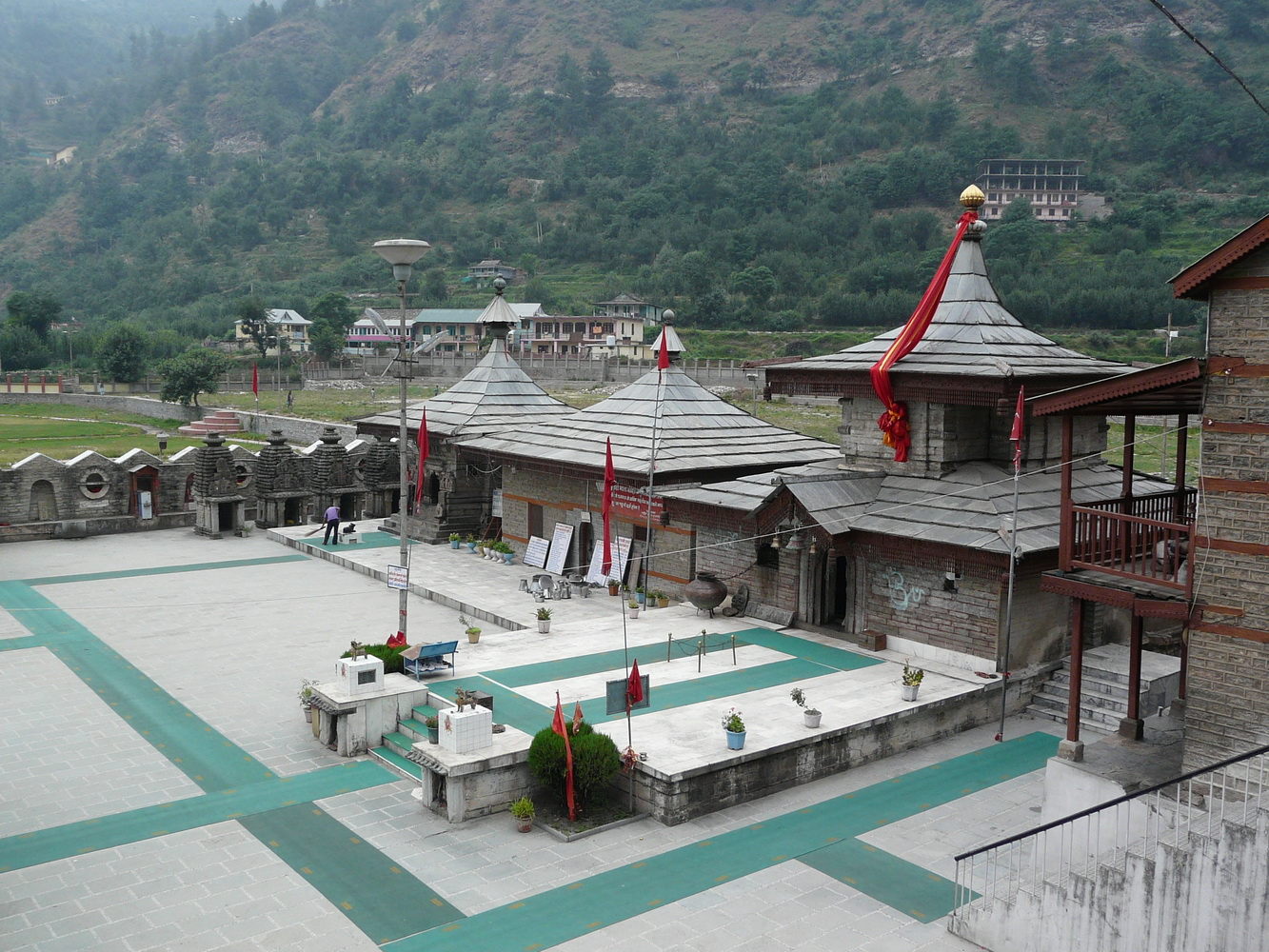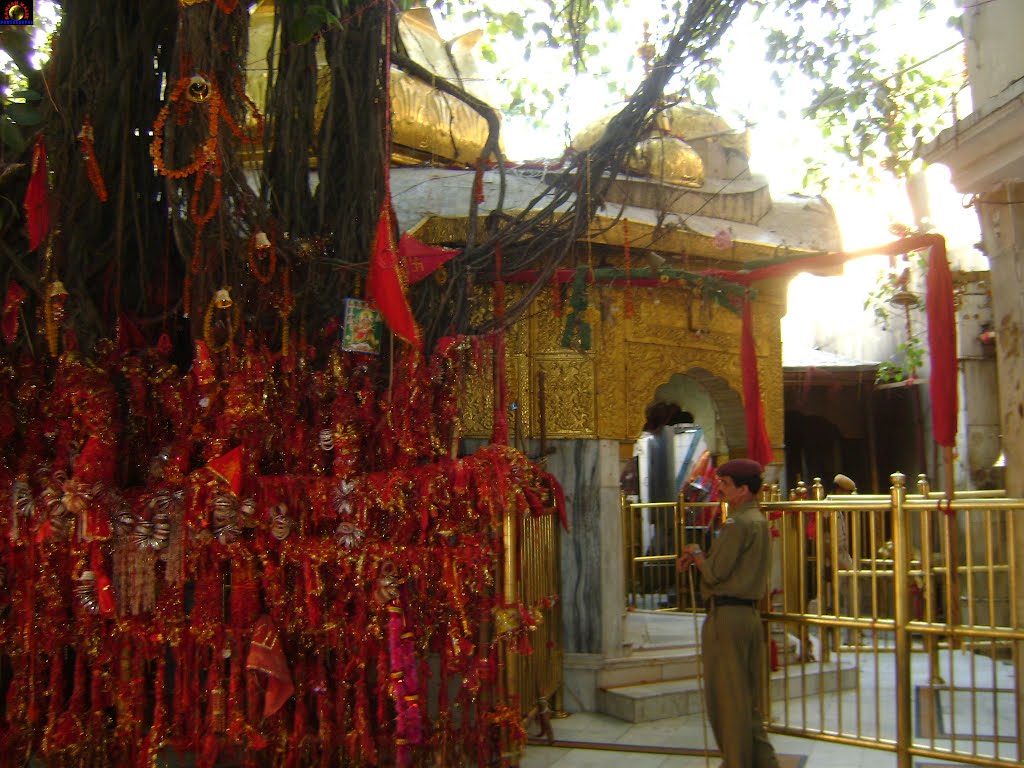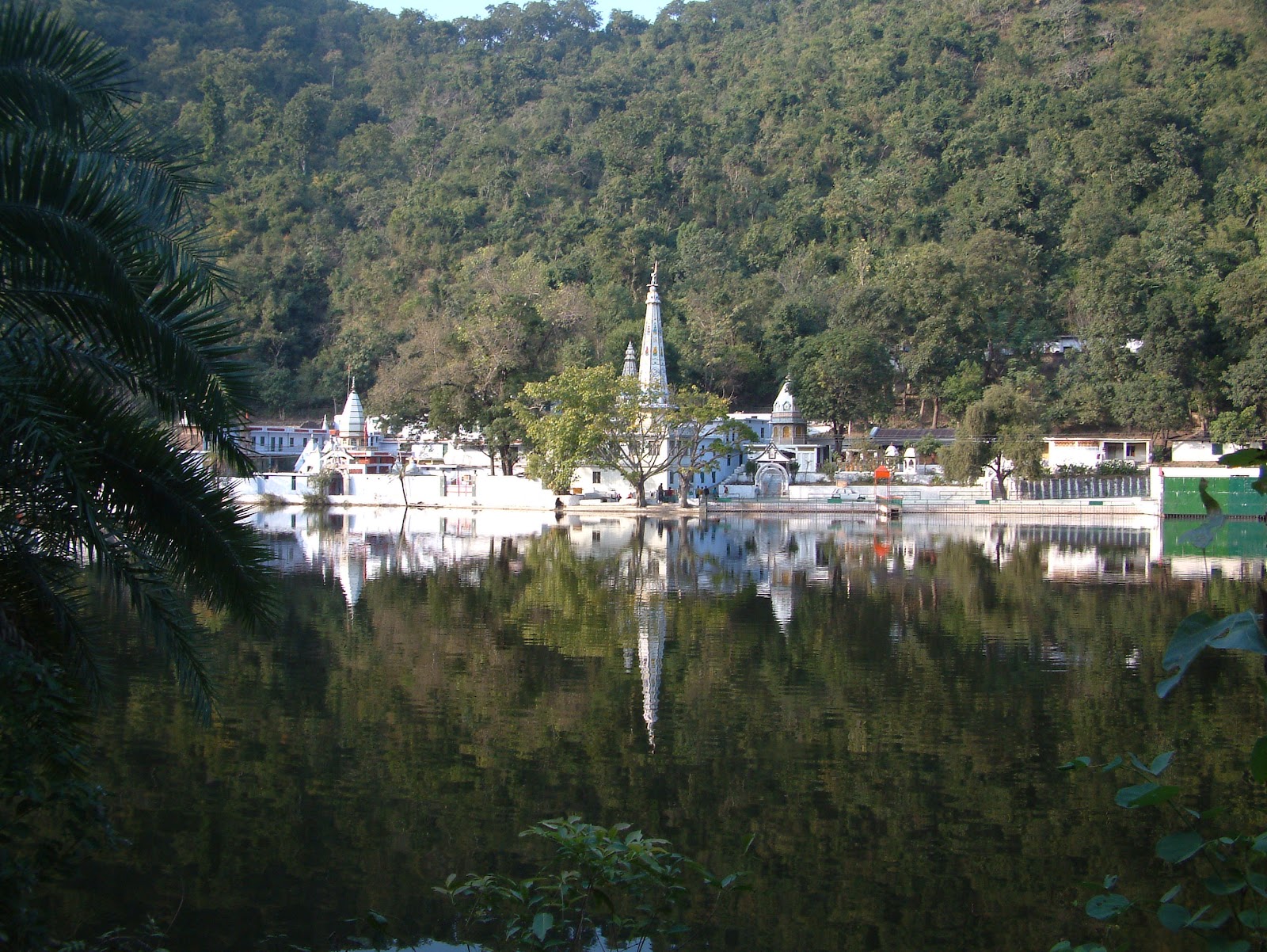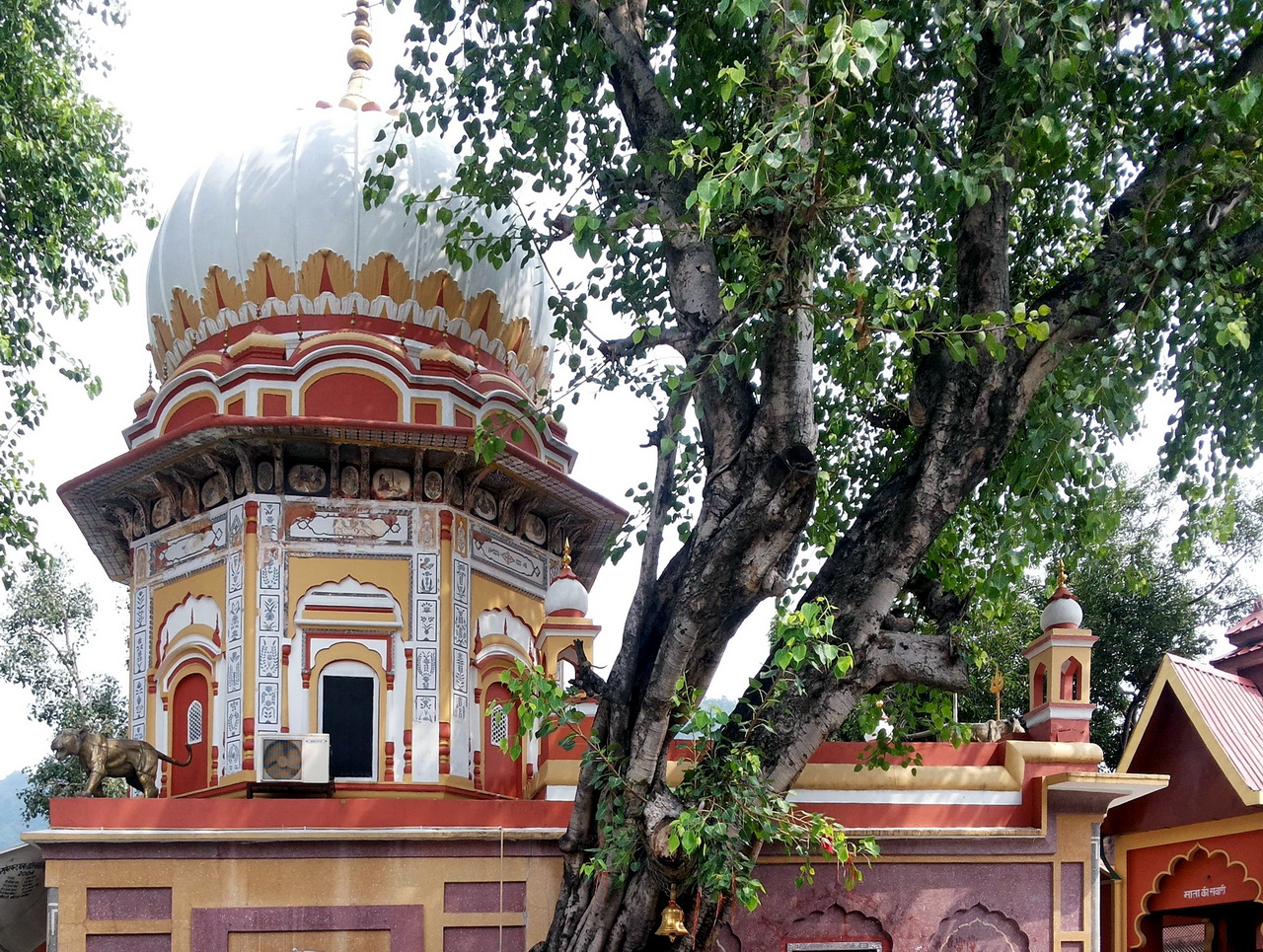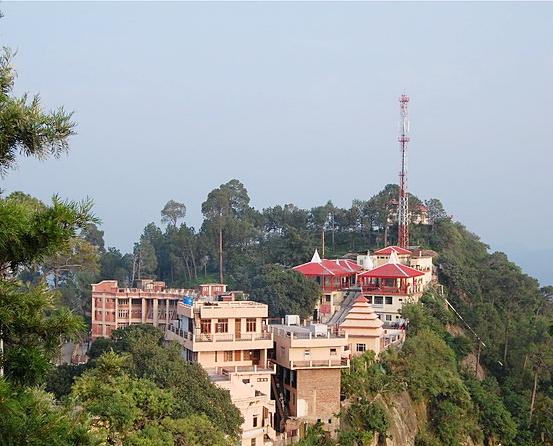Hindu Pilgrimage
BAJRESHWARI TEMPLE: Just outside the town of Kangra is the temple dedicated to Bajreshwari Devi. Known once for its legendary wealth this temple was subject to successive depredations by invaders from the north. Destroyed completely in 1905 by an earthquake, it was rebuilt in 1920 and continues to be a busy place of pilgrimage.
JWALAMUKHI TEMPLE: Not too far from Kangra is this popular place of pilgrimage. An eternally burning flame tha issues from a hollow rock in the sanctum, is considered the manifestation of the goddess Devi. During March-April and September-October every year, colorful fairs are held during the Navratra celebration. Jwalamukhi temple is 30 km. from Kangra.
LAKSHMI NARAYAN TEMPLE: The Lakshminarayan group of temples in the town of Chamba are of great archaeological importance. Six stone temples dedicated to Shiva and Vishnu with tall shikaras, finely carved, date from the 8th century AD. The Lakshminarayan Temple is the oldest in this group. Other temples around Chamba town include, those dedicated to Hari Rai, Champavati, Bansigopal, Ram Chandra, Brijeshwari, Chamunda, Narsingh, and Yogi Charpat Nath.
CHAURASI TEMPLE: The 9th century temples at Bharmaur are among the most important early Hindu temples in the Chamba Valley. According to legend, 84 (chaurasi) yogi’s visited Bharmaur, capital of King Sahil Varma. They were so pleased with the king’s humility and hospitality that they blessed him with ten sons and a daughter, Champavati. A cluster of shrines commemorates that visit. The temple square is the Centre of all activities in the little town of Bharmaur and the Lakshmi, Ganesh, Manimahesh and Narsing temples, the main shrines, are splendidly set off by the dramatic mountainscape.
CHATTARI TEMPLE: Not far from Bharmaur (Chamba) is the Chattari Temple with early examples of carved wood and an 8th century brass image of Shakti.
SHIKARI DEVI (2850 m): It is possible to trek up to Shikari Devi from Janjheli and Karsog (Mandi). Through woods of assorted trees and shrubs - which include several medicinal herbs - two separate trek routes lead up to this ancient shrine located at the crown of the hill. Hunters in the area once prayed to the Goddess for success in their hunt - and here, perhaps, lies the origin of the name ’Shikari Devi’. The Goddess is worshipped in the form of a stone image. Interestingly, the temple which is said to have been in existence since the time of the Pandavas, has no roof - for local legend has it, that all attempts to build one have been unsuccessful.
DHOONGRI TEMPLE: This four tiered pagoda, embellished in finely carved wood, stands sheltered in grove of tall deodar at Manali (Kullu). It is dedicated to Hadimba Devi, wife of the Pandava, Bhim.
BHIMAKALI TEMPLE: A marvelous example of hill architecture, the temple complex at Sarahanis set against the incredibly beautiful backdrop of high ranges and forested slopes. Built in a mixture of the Hindu and Budhists styles, it was the temple of Bushair rulers of Rampur (Shimla). The palaces of the royal family are adjacent to the temple. From Sarahan there is a view of the Srikhand Peak, revered as the home of goddess Lakshami.
TRILOKPUR: About 25 km from Nurpur (Kangra), at the confluence of the Bohar and Bhali streams, is another sacred spot popular with pilgrims of various faiths. There is a Hindu temple, a Buddhist monastery, a gurdwara and a mosque at Trilokpur.
TRILOKPUR : Trilokpur stands on an isolated hillock about 24 km south-west of Nahan, 77-15’ north and 30’30’ east, at an elevation of about 430 m. The place is famous for its temple of renowned goddess Bala Sundri. The temple was built by Raja Dip Parkash in 1573. Trilokpur village built by Kanwar Surjan Singh in 1867 in order to remove the then obtaining scarcity of water in the village. Trilokpur is a place of great religious importance. It is considered to be childhood place of Maa Vaishno Devi. The temple of the goddess Mahamaya Bala Sundri is very famous and attracts lakhs of pilgrims from all over Northern India. An important fair is held at Trilokpur twice a year i.e.in the month of Chaitra and Asvina on sudi ashtmi to chaudas (from the 8th to the 14th of the bright half). During this period the people keep on coming and going but a mammoth gathering is seen on ashtmi and chaudas viz. the first and the final days
BABA BALAK NATH TEMPLE: Shri Sidh Baba Balak Nath Temple Deotsidh is renowned holy shrine of North India. It is situated on the Deotsidh Dhar Range in Shivalik Hills with snow-capped Dhaula Dhar Range, providing the back drop. The temple is located 44 kilometers from Hamirpur, 185 kilometers from Chandigarh, 93 kilometers from Nangal Dam Railway Station, 65 kilometers from Una and about 5 kilometers from Shahtalai, District Bilaspur.


